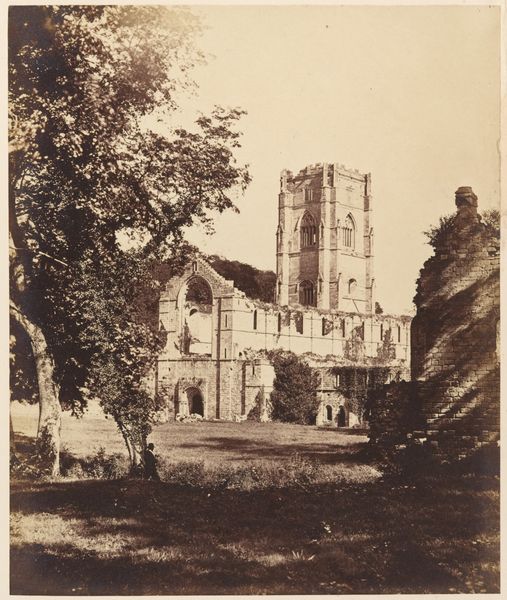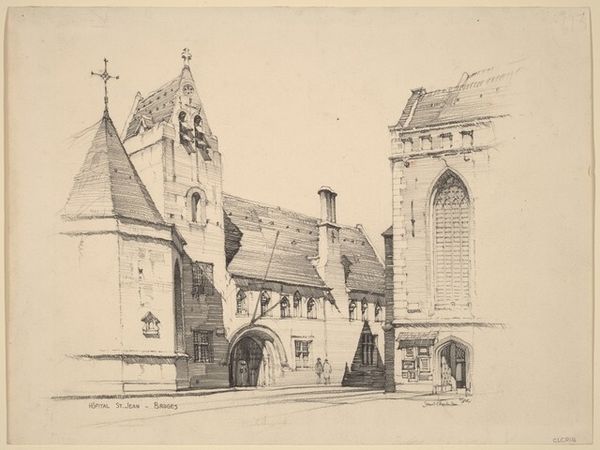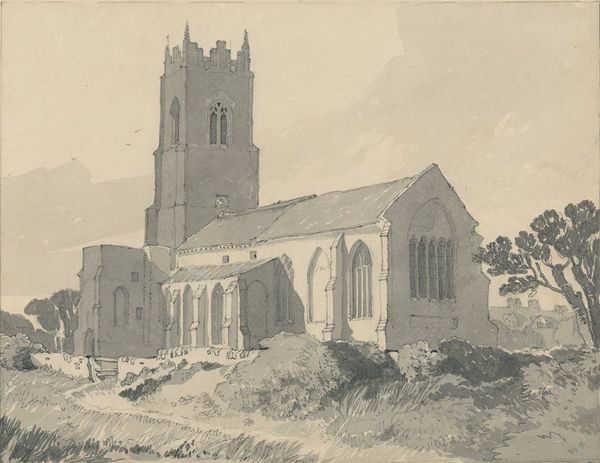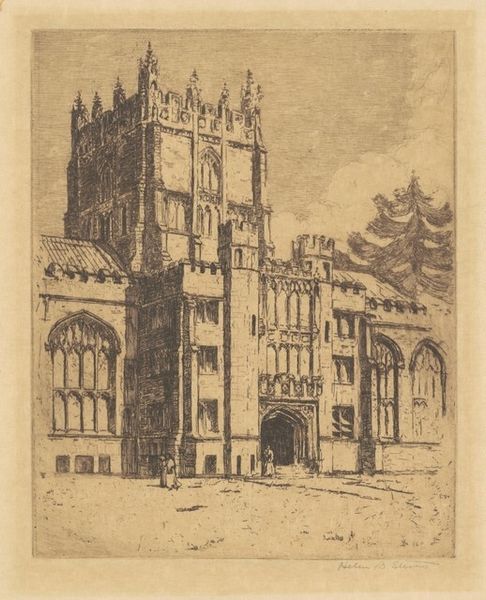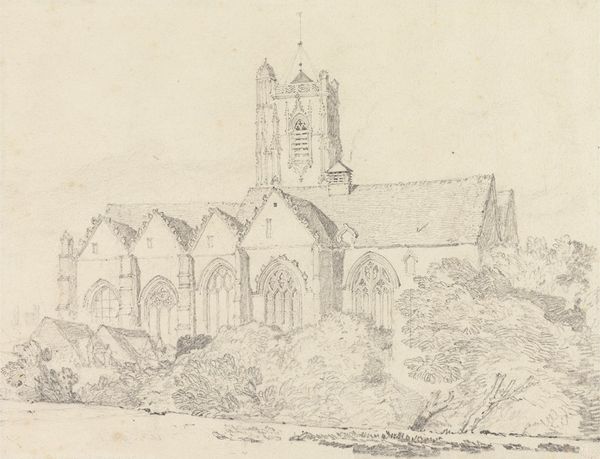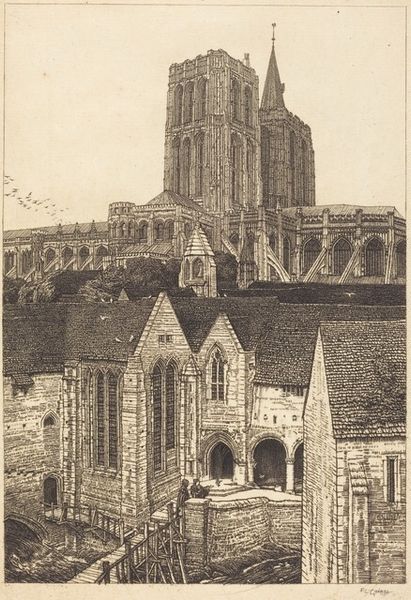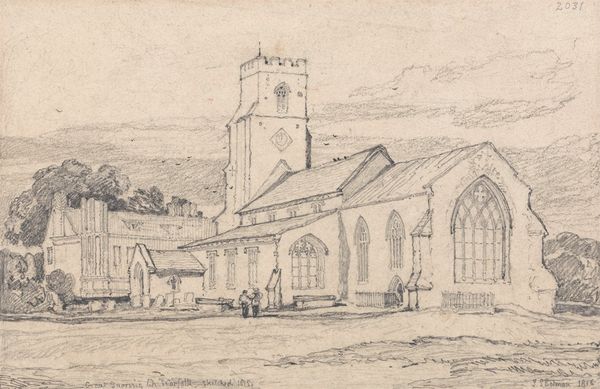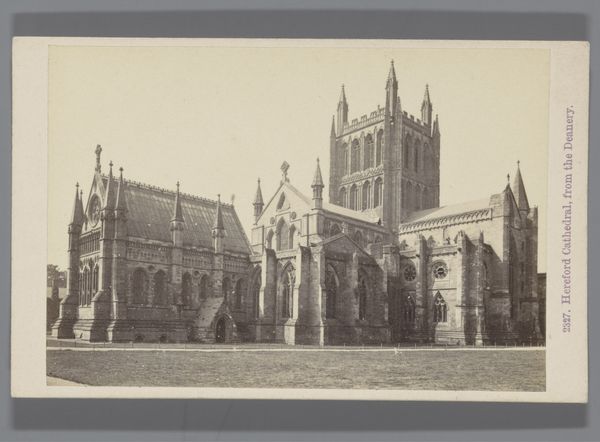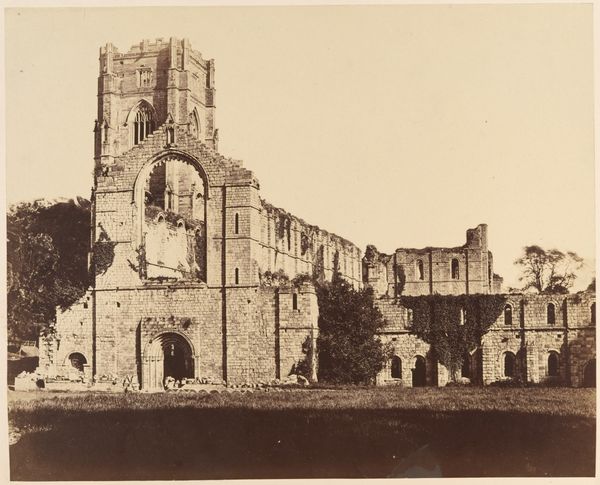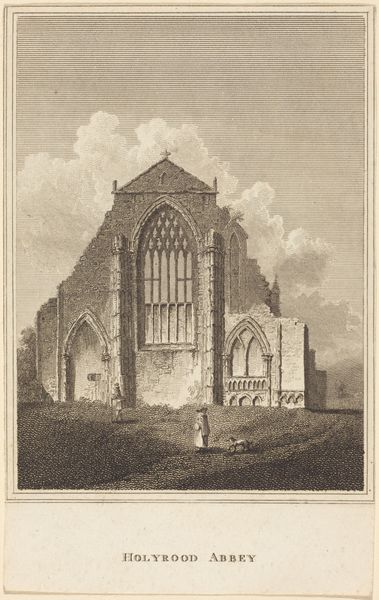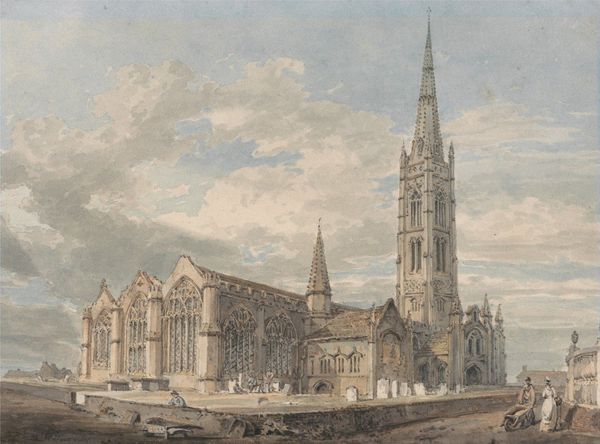
drawing, print, etching, architecture
#
drawing
#
medieval
# print
#
etching
#
landscape
#
architecture
Copyright: National Gallery of Art: CC0 1.0
R. Neville Hadcock created this print of Hexham Priory using etching, a printmaking process that allows for highly detailed and intricate line work. The etching process begins with a metal plate, traditionally copper or zinc. The plate is coated with a waxy, acid-resistant ground. The artist then draws through the ground with a sharp needle, exposing the metal beneath. The plate is then submerged in acid, which bites into the exposed lines, creating recessed grooves. Ink is applied to the plate, filling the etched lines, and the surface is wiped clean. Finally, the plate is pressed onto paper, transferring the ink and creating the print. Here, Hadcock uses the etched line to capture the Priory’s architectural details, from the stones of the façade to the intricate gothic windows. Notice how the density of the lines creates areas of shadow and depth, giving the image a sense of volume. The print is a testament to Hadcock’s skill, and also to the rich tradition of printmaking as a means of documenting and disseminating images of architecture and place.
Comments
No comments
Be the first to comment and join the conversation on the ultimate creative platform.
